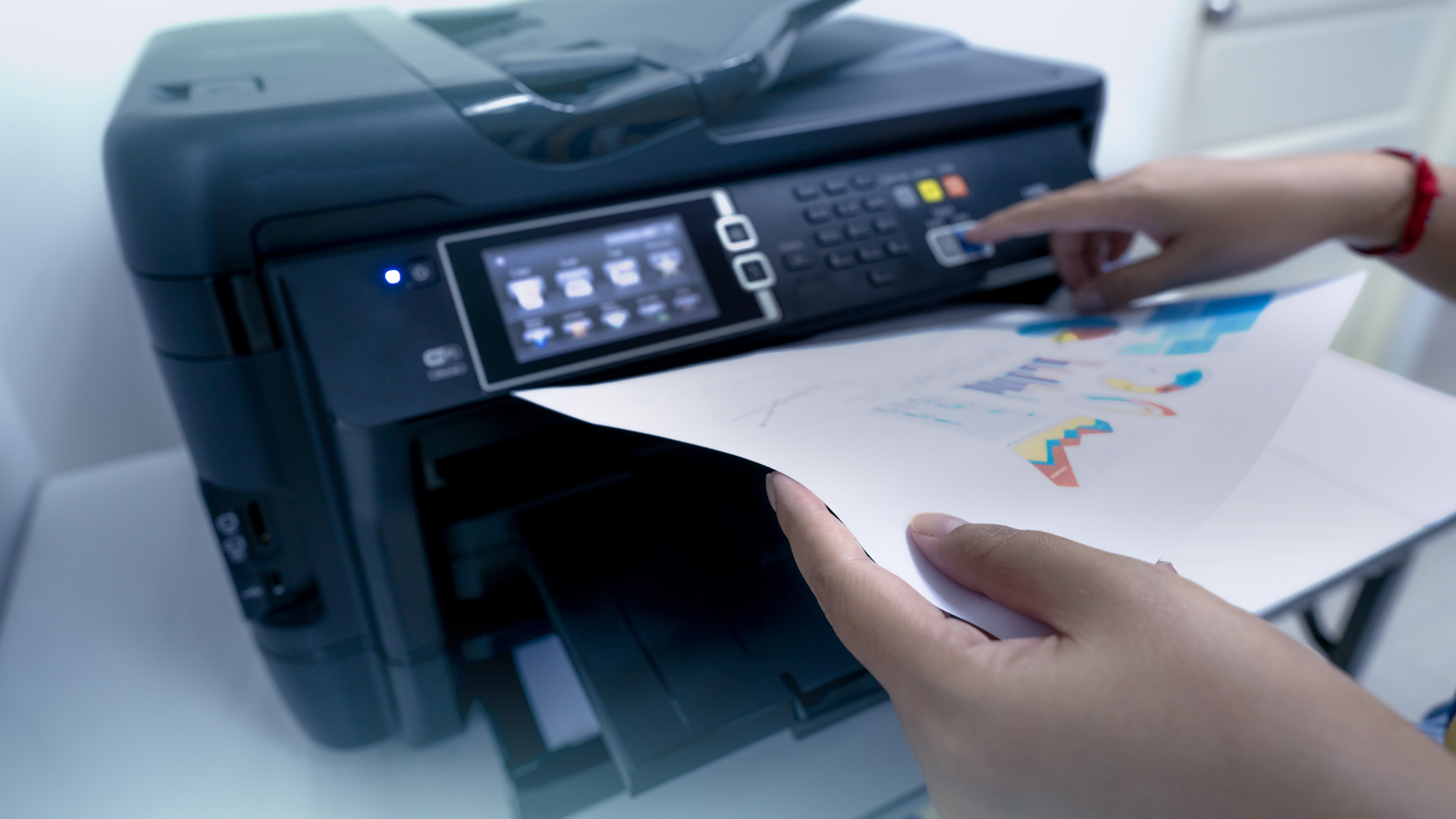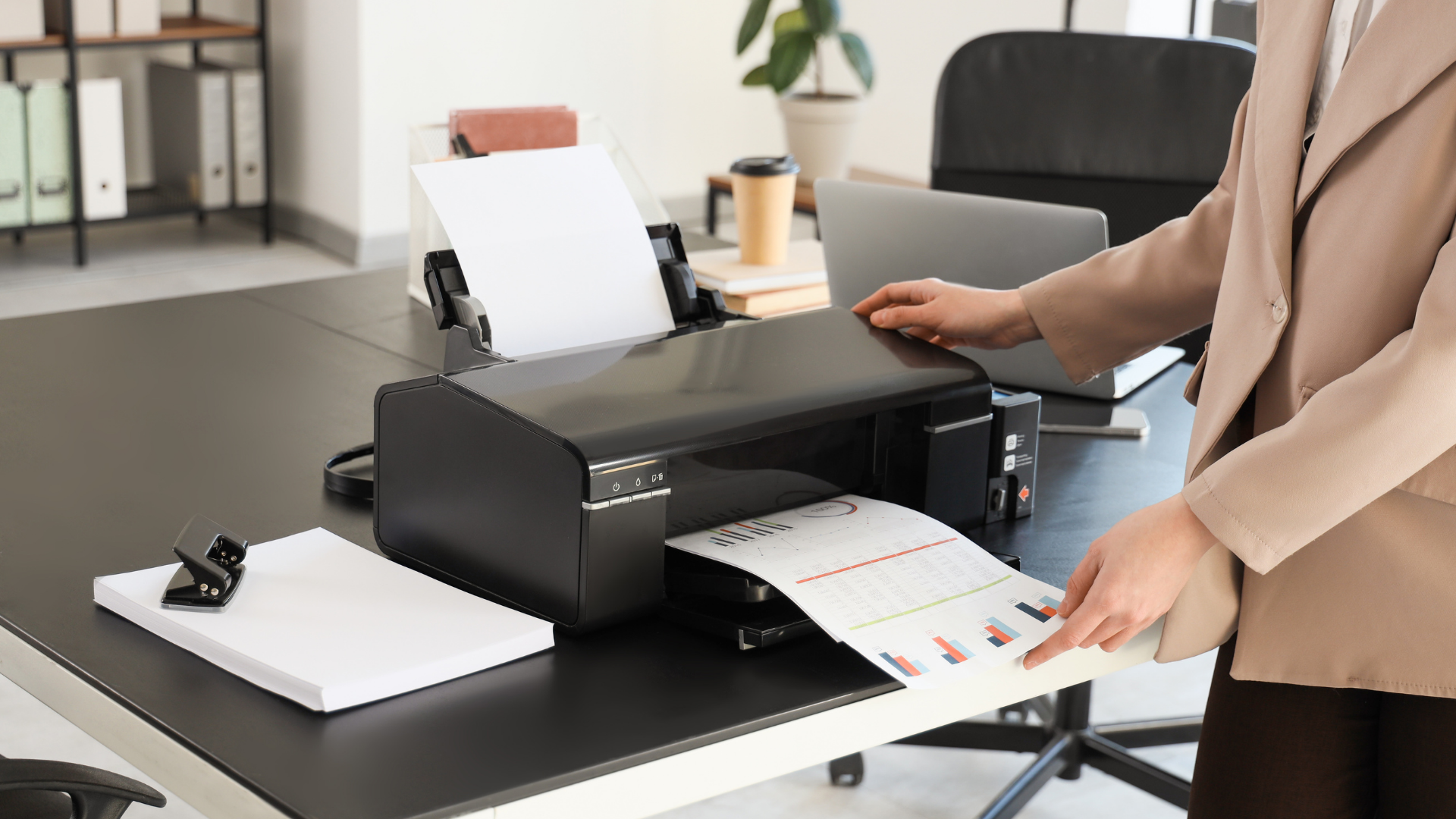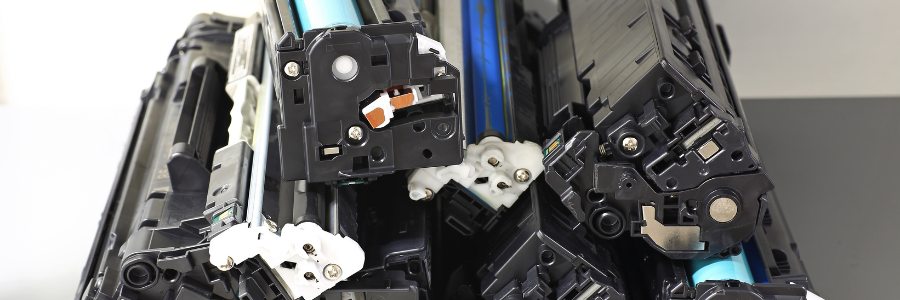Understanding the Basics of Lexmark Ink Cartridge Refilling
Identifying the Right Lexmark Cartridge Model
Before attempting to refill your Lexmark ink cartridge, it's crucial to identify the correct cartridge model for your printer. This ensures compatibility and prevents potential issues during the refilling process. Lexmark cartridges are typically labeled with an OEM (Original Equipment Manufacturer) number, which is a unique identifier for each cartridge type.
To find the right model for your printer, you can check the printer's manual, look at the old cartridge you are replacing, or search the Lexmark website with your printer model. Here's a simplified list of common Lexmark cartridge models and their corresponding printers:
- B221X00OEM: Used in Lexmark B series, such as B2236dw.
- 56F1U00CTS: Compatible with Lexmark MS series, including MS521dn, MS621dn, and MS622de.
- 56F1X00OEM: Fits Lexmark MX series like MX521ade and MX622adhe.
Remember, using the correct ink type is just as important as the cartridge model. Lexmark printers are designed to work with specific ink formulations, so using the wrong type can lead to poor print quality or even damage to the printer.
Once you have identified the right cartridge model and ink type, you can proceed to gather the necessary tools and materials for the refilling process.
Tools and Materials Needed for Refilling
To successfully refill your Lexmark ink cartridges, you'll need a few essential tools and materials. Ensure you have a quality refill kit that typically includes ink bottles, syringes, and needles. It's crucial to use ink that matches the color and consistency of the original Lexmark ink to maintain print quality.
- Refill ink bottles (specific to your cartridge model)
- Syringe and needle (for precise ink injection)
- Protective gloves (to avoid ink stains on your hands)
- Paper towels or clean cloths (for cleaning up spills)
- Scotch tape or labels (for resealing the cartridge)
Before starting the refill process, inspect your cartridge for any signs of damage or wear. Cartridges in poor condition may not function correctly even after refilling. Additionally, prepare a clean workspace to avoid contamination and ensure a smooth refilling experience.
Safety Precautions Before Starting
Before embarking on the refilling process, it's crucial to prioritize safety to prevent any accidents or damage to your Lexmark printer. Always ensure there is a small amount of ink left in the cartridge to avoid chip lockout, as Lexmark cartridges use a one-time serial number detection system that can render the cartridge unusable if completely depleted.
- Turn off the printer's chip information feature before the ink level reaches empty.
- Wear protective gloves to avoid direct contact with the ink.
- Work in a well-ventilated area to minimize inhalation of fumes.
- Have paper towels or a clean cloth at hand for any potential spills.
Remember, taking these precautions not only safeguards your health and workspace but also helps maintain the functionality of your cartridge and printer.
Step-by-Step Guide to Refilling Lexmark Black Ink Cartridges
Removing the Cartridge Label
Once you have identified the correct Lexmark cartridge model and gathered the necessary tools and materials, the first step in the refilling process is to remove the cartridge label. This label often conceals one or more holes through which the ink is injected into the cartridge. Removing the label should be done carefully to avoid damaging the cartridge or causing ink spills.
When removing the label, it's important to do so gently to ensure that the surface underneath remains intact and clean, which is crucial for a successful refill.
Follow these steps to remove the label:
- Locate the label on the top or side of the cartridge.
- Use a pair of tweezers or a small flathead screwdriver to lift the edge of the label.
- Peel the label back slowly, making sure not to tear it if you plan to reapply it after refilling.
After the label has been removed, you will have access to the refill holes where the new ink will be injected. It's essential to proceed with caution to prevent any ink from leaking out during the refilling process.
Refilling the Cartridge with Ink
Refilling your Lexmark ink cartridge requires precision and care to ensure proper function after the process. Inject the ink slowly into the refill hole, taking care not to overfill. For black ink cartridges, a general guideline is to refill with 3ML of ink, while color cartridges typically require 2ML per color chamber.
It's crucial to refill the cartridge to only 60%-80% of its capacity to prevent ink spillage and ensure optimal printing performance.
After refilling, gently tap the cartridge on a paper towel to check for leaks. If no ink leaks out, you've successfully refilled your cartridge. Here's a simple checklist to follow:
- Ensure the printer is turned off before starting.
- Refill slowly to avoid air bubbles.
- Check for leaks after refilling.
- Leave some ink in the cartridge before refilling to avoid chip lock-up.
Remember, refilling ink cartridges can be a messy task, so it's advisable to wear gloves and protect your work surface. If done correctly, refilling your Lexmark cartridge can extend its life and save on printing costs.
Reapplying the Label and Testing the Cartridge
Once you have refilled your Lexmark black ink cartridge, it's crucial to reapply the label to protect the ink from drying out and to maintain the cartridge's integrity. Carefully align the label and press it firmly into place. After reapplying the label, it's time to test the cartridge to ensure it's functioning correctly.
Testing the cartridge is an essential step to confirm that the refilling process was successful and that the cartridge is ready for use. Insert the cartridge back into your printer and run a test print. Check for any signs of leakage, streaking, or inconsistent print quality.
If the test print is satisfactory, you've successfully refilled your Lexmark cartridge. However, if you encounter issues, refer to the troubleshooting section for guidance. Remember, while refilling cartridges can be cost-effective, it's important to monitor ink levels to avoid running out of ink unexpectedly. Use your printer's display or estimate based on previous usage as a baseline to track your cartridge's ink levels.
Refilling Lexmark Tri-Color Ink Cartridges
Determining the Correct Color Chambers
Before injecting ink into your Lexmark tri-color cartridge, it's crucial to identify the correct color chambers. Each chamber corresponds to one of the primary colors: cyan, magenta, or yellow. Incorrectly filling a chamber can lead to color discrepancies in your printouts and may damage the cartridge.
To ensure you're refilling the right chamber, you can refer to the cartridge's label or consult the printer's manual. Some cartridges also have transparent areas or diagrams that indicate which color goes where. If you're unsure, it's best to seek guidance from online resources or customer support.
It's essential to be meticulous during this step to avoid cross-contamination of colors, which can significantly affect printing quality.
Remember, the battle between pigment and dye inks for inkjet printers is ongoing, and the type of ink you use can have a significant impact on your printing output. Always use the ink type recommended by Lexmark for your specific cartridge model.
Injecting Ink into the Tri-Color Cartridge
When refilling a Lexmark tri-color ink cartridge, it's crucial to inject the correct amount of ink into the appropriate color chamber. Inject ink slowly, ensuring you add 2ML for cyan, magenta, and yellow (CMY) colors. Overfilling can lead to spills and affect printing quality, so aim to fill each chamber to 60%-80% capacity.
- Step 1: Identify the correct color chamber for each color.
- Step 2: Inject 2ML of ink into the designated chamber.
- Step 3: Avoid overfilling; stop at 60%-80% capacity.
- Step 4: Let the cartridge rest for a short period after refilling.
After refilling, it's advisable to let the cartridge sit quietly for about 10 minutes. This allows the ink to settle and reduces the risk of immediate leaks or spills when reinserting the cartridge into the printer.
Remember to handle the cartridge gently throughout the process to prevent any damage or ink leakage. If you encounter issues with ink running straight through the cartridge, consider adjusting the depth of the needle insertion or consult additional resources for troubleshooting.
Sealing and Resting the Cartridge Post-Refill
Once you have carefully refilled your Lexmark tri-color ink cartridge, it's crucial to seal it properly. Use the label or sticker to cover the refill holes, ensuring no ink can escape. After sealing, allow the cartridge to rest quietly for at least 10 minutes. This waiting period helps the ink to settle and prevents any immediate leaks or spills when the cartridge is reinstalled in the printer.
During this resting phase, it's a good opportunity to clean up your workspace and ensure no ink has been spilled. If you do find ink spills, address them promptly to avoid any potential damage or staining.
After the resting period, it's advisable to perform a few maintenance checks on your printer. While Lexmark cartridges are designed for quality prints, printer maintenance tips can help avoid common issues:
- Resetting the printer can erase certain settings, so only do this if necessary.
- Regularly check ink levels to identify potential clogs or errors.
- Although refilling cartridges is cost-effective, using original Lexmark cartridges can sometimes ensure the best quality prints.
Troubleshooting Common Refill Issues
Handling Ink Spills and Overflows
When refilling Lexmark ink cartridges, spills and overflows can be a common issue, but with the right approach, they can be managed effectively. Always refill ink cartridges slowly and carefully to prevent overflows. If an ink spill occurs, immediately wipe the area with a damp cloth to prevent staining. For larger spills, use an absorbent material like paper towels or a sponge.
- Turn off the printer and unplug it before cleaning any ink spills inside the machine.
- Wear gloves to protect your hands from ink stains.
- Cover your work area with newspaper or a disposable cloth to catch any accidental spills.
Remember, patience is key when refilling ink cartridges. Rushing the process increases the risk of spills and can lead to poor printing performance.
If you encounter persistent issues with ink leakage or cartridge recognition, consider reaching out for support. Many users find that extending ink cartridge life and seeking printers with low-cost ink cartridges can be more cost-effective in the long run.
Dealing with Chip Information and Cartridge Detection
When refilling Lexmark ink cartridges, it's essential to address the chip information and cartridge detection system. Most modern Lexmark cartridges come with a chip that monitors ink levels, and this chip can complicate the refilling process. To ensure your printer recognizes the refilled cartridge, follow these steps:
- Turn off the chip information: Before the cartridge runs completely dry, disable the chip information on your printer. This prevents the chip from locking and rendering the cartridge undetectable after refilling.
- Check for remaining ink: Always leave a small amount of ink in the cartridge before refilling to avoid chip lockout.
- Reinstall the cartridge: After refilling, install the cartridge back into the printer. The chip should now recognize the new ink level.
It's important to note that while some third-party cartridges may not accurately display ink levels, they are still fully functional and can print the expected number of pages.
Remember, if you're unsure about the remaining ink levels, use the lifespan of a name brand cartridge as a baseline to manually track usage. This proactive approach can prevent printing interruptions and ensure a smooth refilling experience.
Ensuring Consistent Print Quality After Refilling
After refilling your Lexmark ink cartridges, it's crucial to ensure that the print quality remains high. Performing a few simple checks and maintenance tasks can make a significant difference. Start by running a print test to check for any irregularities in the output. If you notice streaks or faded areas, it may be necessary to perform a head cleaning cycle using your printer's built-in utility.
To maintain optimal performance, consider the following printer maintenance tips:
- Replace cartridges as needed
- Clean the print head regularly
- Calibrate printer settings
- Verify print settings before starting a job
- Update printer software; restart the printer after updates
Remember, consistent print quality is not just about the ink you use, but also about how well you maintain your printer.
If issues persist, consult your printer's manual or contact Lexmark support for further guidance. Keeping your printer clean and updated, along with using high-quality ink, will help in achieving the best results from your refilled cartridges.
Maintaining Your Refilled Lexmark Cartridges
Proper Storage and Handling of Refilled Cartridges
After refilling your Lexmark ink cartridges, proper storage and handling are crucial to maintain their performance and longevity. Store the cartridges in an upright position to prevent ink from settling unevenly or leaking. It's also important to keep them in a cool, dry place, away from direct sunlight and extreme temperatures, which can degrade the ink quality.
To ensure that your cartridges remain in good working condition, handle them gently and avoid touching the ink nozzles or electronic chips. This can help prevent potential print quality issues or cartridge recognition problems. Additionally, it's beneficial to use your printer regularly, at least once every couple of weeks, to keep the cartridges primed and ready for use.
Remember, while refilled cartridges can be a cost-effective solution, they require careful attention to maintain their functionality. By following these simple guidelines, you can help extend the life of your refilled Lexmark cartridges.
When to Refill Again: Monitoring Ink Levels
Knowing when to refill ink cartridges is crucial for maintaining optimal printer performance and avoiding print quality issues. It's best to plan a refill when the ink level reaches about 20-30% remaining. This strategy helps prevent the cartridge from drying out and ensures that there is enough ink for the printer to function correctly without interruption.
Monitoring ink levels can be done through your printer's software interface, which typically provides an estimate of remaining ink. Some printers may also have LED indicators or other visual cues to alert you when ink levels are low.
To keep track of your ink usage and determine the best time for a refill, consider the following points:
- Regularly check the printer's ink level indicators.
- Pay attention to any changes in print quality, which may signal low ink levels.
- Note the frequency of your printing tasks to estimate ink consumption.
- Refill before starting a large printing project to ensure consistent quality.
Extending the Life of Your Lexmark Cartridges
To maximize the lifespan of your refilled Lexmark cartridges, it's essential to follow a few key practices. Store cartridges in a cool, dry place away from direct sunlight to prevent ink from drying out or degrading. When not in use, keep your printer in a dust-free environment to avoid clogging the print heads.
Regular use of your printer is recommended to keep the ink flowing and prevent the nozzles from drying out. However, there's a debate on whether to keep printers on or off for optimal print head health. Cartridge World discusses this topic with considerations for inkjet printers and preserving print head life.
Additionally, it's beneficial to use your printer regularly. This helps maintain ink flow and prevents nozzles from drying out. If you're not planning to print frequently, consider running a 'nozzle check' or 'print head cleaning' cycle every few weeks to maintain print quality and cartridge health.
Keep your Lexmark printers running smoothly with our top-quality refilled cartridges. At Cartridge World, we understand the importance of reliable printing solutions. That's why we offer a wide range of services to maintain your refilled Lexmark cartridges, ensuring peak performance and longevity. Don't let printer downtime disrupt your workflow. Visit our website for expert advice,
maintenance tips, and to explore our comprehensive printer services. Make the smart choice for your printing needs—click through to our 'Printer Services' section now!
Troubleshooting and Repairing Your Lexmark Printer
Maintaining the performance of your Lexmark printer involves not just regular cartridge refills and proper handling, but also addressing any mechanical or technical issues that may arise. For those instances when your printer malfunctions or shows error messages that cannot be resolved through basic maintenance, seeking professional
Lexmark printer repair services is essential.
Recognizing Signs That You Need Lexmark Printer Repair
- Persistent Error Messages: If your printer continues to display error messages despite troubleshooting efforts, it may indicate a deeper mechanical issue.
- Poor Print Quality: Streaks, faded prints, or irregular patterns often persist even after cartridge cleaning and alignment, suggesting possible hardware problems.
- Unusual Noises: Grinding, clicking, or other unusual sounds during printing can signal mechanical failures that require professional attention.
- Paper Jams: Frequent paper jams, despite proper paper loading and maintenance, might be due to worn-out rollers or misaligned trays, which need expert repair.
How to Choose the Right Lexmark Printer Repair Service
- Certified Professionals: Ensure that the service provider is certified by Lexmark to handle their printers. This guarantees that they have the specific knowledge and tools required for precise repairs.
- Warranty and Service Guarantees: Opt for repair services that offer a warranty on their work. This protects you in case the repair does not resolve the issue or if the printer malfunctions shortly after the service.
- Availability of Parts: Check if the repair service has ready access to genuine Lexmark parts. Using original parts helps maintain your printer’s performance and longevity.
- Customer Reviews: Look at feedback from other customers to gauge the reliability and quality of the repair service.






